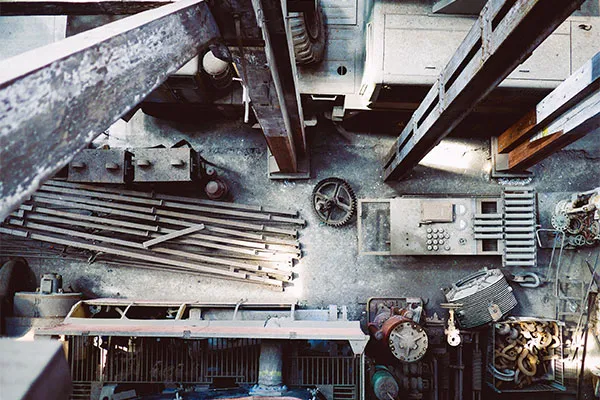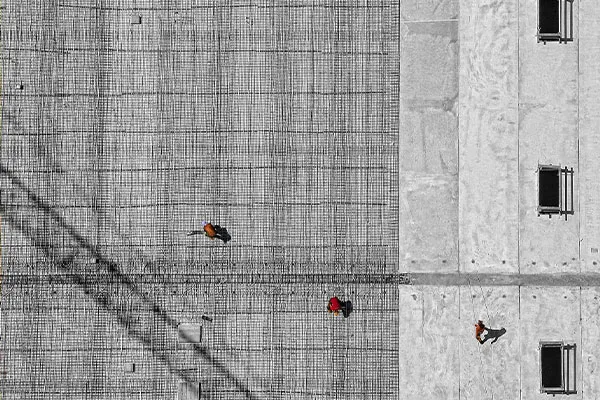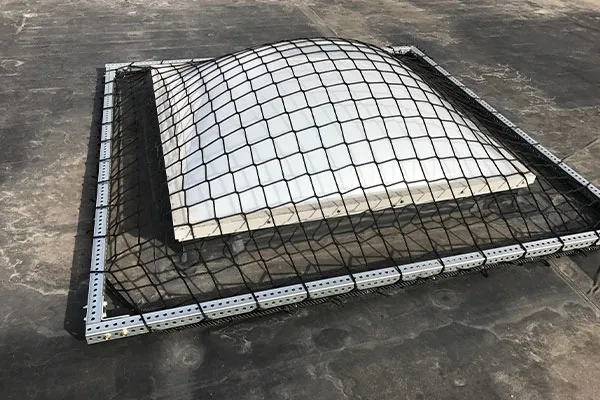Skylights Fall Protection Equipment for Construction Workers

Falls through skylights or openings in roofs or floors is a leading cause of death and major injuries, especially in the construction industry. In many incidents, these lives were lost in the blink of an eye because of clumsiness or forgetfulness. There are fall protection standards set in place by OSHA to prevent these tragedies, but which ones apply to skylights?
CFR# 1910.21(a)(1)
“Floor hole.” An opening measuring less than 12 inches but more than 1 inch in its least dimension, in any floor, platform, pavement, or yard, through which materials but not persons may fall; such as a belt hole, pipe opening, or slot opening.
CFR# 1910.23(e)(8)
Skylight screens shall be of such construction and mounting that they are capable of withstanding a load of at least 200 pounds applied perpendicularly at any one area on the screen. They shall also be of such construction and mounting that under ordinary loads or impacts, they will not deflect downward sufficiently to break the glass below them. The construction shall be of grillwork with openings not more than 4 inches long or of slatwork with openings not more than 2 inches wide with length unrestricted.
CFR# 1910.23(a)(4)
Every skylight floor opening and hole shall be guarded by a standard skylight screen or a fixed standard railing on all exposed sides.
Essentially, any opening that a person could fall through needs to be protected. This could be on a roof or floor in many circumstances and industries.
Unexpected Tragedies

The dangers of skylights or floor openings may seem obvious, but they are often overlooked. In 2018 between January 1st and July 30th, there were fourteen falls from heights of 15 to 25 feet through unguarded skylights.
Three of these accidents, two occurring just weeks apart, were the result of employees losing their balance. In the first incident, a 21-year-old man was working on a roof when an article of his clothing became stuck or caught causing him to trip and fall through a nearby skylight[2]. In the second tragedy, a 29-year-old man was working with a colleague when he began to walk backward tripping over and through an unguarded skylight[3]. And in the third incident, a 41-year-old man stepped into a skylight while returning to an upright position after being bent over installing insulation with his coworkers[4].
The remaining cases all involved individuals stepping onto fiberglass skylights which ultimately shattered under their weight. As stated on pg. 8 of “NIOSH ALERT: Preventing Falls of Workers through Skylights and Roof and Floor Openings” published by National Institute for Occupational Safety and Health (NIOSH), it is estimated that a 200-pound person could transmit 400 to 500 pounds of force while falling onto a skylight[5]. NIOSH recommends that skylight manufacturers improve their designs to prevent a person from falling through if they should fall into one, but building owners and crews are encouraged to take precautions of their own.
Preventing Skylight Falls

Some of the most important recommendations fall upon building owners. They should provide all crews with a printed map or documentation outlining the location of every skylight on the roof. This may seem unnecessary but in some cases, skylights are not as obvious, like in snowy areas of the country. Warning signs should be put up in and around areas skylights are present and in languages most easily understood. And as a final precaution, should all others fail to prevent an individual from encountering a skylight, building owners should install some type of barrier around or over each skylight. Barriers can include guardrails or permanent railings, protective screens, or protective netting like our Skylight Safety Net which can be placed over a skylight.
Unfortunately, not all buildings will have these precautions in place so anyone working around skylights or floor openings must be aware of their surroundings at all times. Never step, sit, or lean on skylights or any material covering an opening. If you create an opening, cover it securely and make sure its location is well known. If you are working more than six feet above the ground, you must use your “personal fall arrest system (PFAS)” [5]. Finally, if you notice an unguarded skylight or opening, immediately inform your supervisor.
Whether it be a lack of knowledge concerning the instability of skylights or carelessness, skylights and floor openings remain a neglected fall hazard. A hazard that is relatively simple to correct when compared to the outcome of someone falling through an unguarded skylight or opening. Through a combination of location maps, warning signs, barriers, or netting, we can prevent these tragedies from happening.
Get in touch with us!
Questions? Comments? Ready to order your next custom net? Contact us for help via email ([email protected]) or call us at 1-800-331-2973 and we will be happy to assist you.
Don't forget to submit your stories!
If you have news that you would like to be heard, submit any articles, pictures, and ideas to [email protected].






